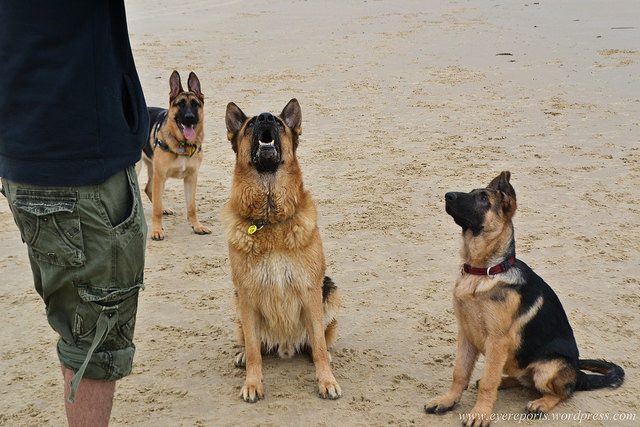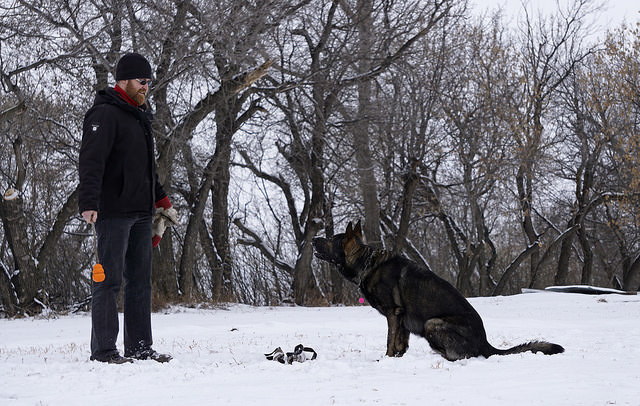“Sit” is a basic cue that most German Shepherd Dog owners want their dog to know. It’s useful for a variety of things and is the first step to teaching a “sit-stay.” The key to teaching any behavior is getting the dog to respond to the cue on the first request, every time. The following is a simple but effective way to get the “sit” you’ve always wanted from your German Shepherd.

Capturing The Behavior
You are going to use a form of training called “capturing” to train “sit.” This is when you wait for a dog to offer what you want and then you mark it (with a click, or a verbal word such as “yes” or “good”), then reward it. Capturing is a great way to train because it makes your Shepherd use their brain to figure out what you want. Behaviors taught through capturing are much stronger than those taught using other methods.
To capture your German Shepherd performing a “sit,” have your rewards (toys, treats, etc.) ready and your clicker if you use one. You can keep your Shepherd on-leash at first to keep him from wandering. Now, just stand still and wait. Most dogs will eventually sit when you ignore them long enough. As soon as his bottom hits the floor, mark and reward. Toss the reward away so your dog has to get up to get it – thus resetting him for the next sit.
Do short training sessions, just 5-10 minutes, a couple times a day.
Adding the Cue
Once your German Shepherd is sitting as soon as he gets his reward, without trying any “extra behaviors” like walking around or staring at you, he’s figured out what you want. At that point, you can add the cue. Adding the cue, “sit,” is easy. Just say the word as your Shepherd is getting into the sitting position, then mark and reward.
Do a few repetitions of this and then test the cue by saying it while your Shepherd is standing. If he promptly sits, he’s got it – mark once and reward heavily! If he doesn’t, that’s okay. Do nothing and just wait for him to sit and say the cue during the sit a few more times and test again.
Fading the Treats
Once your dog is sitting beautifully in multiple places every time you say “sit” just once, it’s time to fade out those treats. You can use other rewards – verbal praise, toys, petting, etc. – anything your dog likes.

If your dog doesn’t sit when you say the cue once, no reward. But this won’t happen very often with this form of training. If it does, your German Shepherd may be distracted by his environment, or even nervous or stressed. Use it as information and assess the situation before you ask your dog again – you may need to put some distance between him and an object that is bothering him, or leave the environment altogether if he is really nervous.
Now you’re ready to move on to “stay” !
